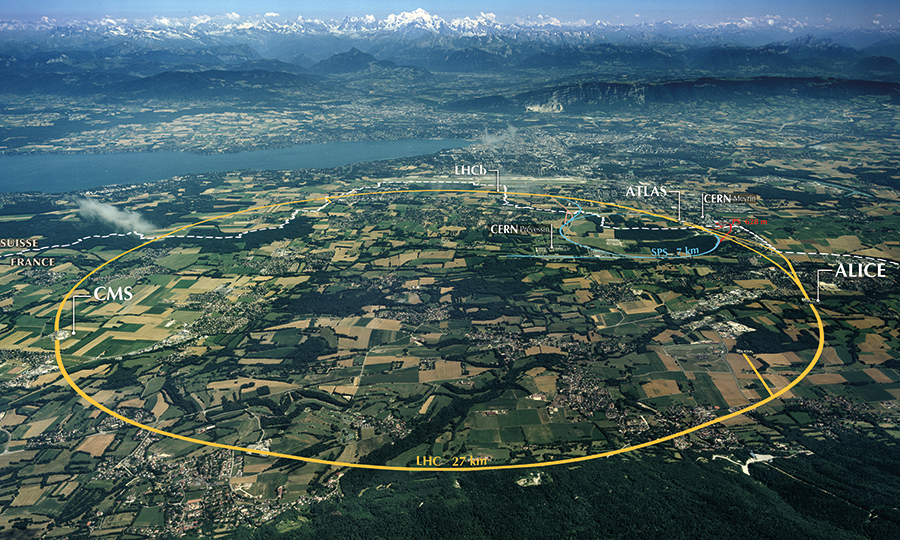George Pendle on the Large Hadron Collider
‘Its name tells you everything you really need to know: it’s big, it’s complex and it smashes things together.’
‘Its name tells you everything you really need to know: it’s big, it’s complex and it smashes things together.’

You do not need to understand what the Large Hadron Collider does in order to appreciate what it is. Its name tells you everything you really need to know: it’s big, it’s complex and it smashes things together.
In an age of technological miniaturization, the Large Hadron Collider is the grandest of anomalies. The biggest machine ever made, it is a 27-kilometre circular loop of tubes, cables, electromagnets and particle accelerators buried deep beneath the Franco-Swiss border like some kind of votive treasure hidden by a mysterious scientific tribe. It’s a circle, of course – the first, simplest and most perfect form – but, once you look inside it, at the miles of pipes and cylinders that coalesce and mingle like the intestines of a giant worm god, you realize that it is the laboratory as labyrinth, an endless ouroboros of inscrutable technology.
This complexity is refreshing. Too often, ease can breed apathy. Like gods indifferent to our powers, we have already grown accustomed to the omnipresence afforded us by Google Maps and the all-knowingness gifted us by Wikipedia. But the Large Hadron Collider is not easy. It exists so far at the forefront of science that it often seems to spill into the mythic. It can seem as enigmatic as Stonehenge as it searches for strangelets and pentaquarks, doubly charmed baryons, unparticles possessed of ungravity, and other-dimensional Kaluza-Klein gravitons. The Large Hadron Collider is truly occult, but its secret knowledge is kept from us not by the high priests of CERN who run it, but by our own inability to comprehend it.
And then there is its rare profundity. It seeks to pry open the secrets of the smallest structures in the universe, to take apart reality and see what it’s made of. Yet, perversely, this knowledge is to be gained by a very simple method: it accelerates particles together at great speeds and then whaps them together. Whap! Here, at the very heights of human complexity, we’re still basically hitting two things together to see what happens. The inventor of fire would be proud.
When the Large Hadron Collider was about to be turned on for the first time in 2008, there was a flurry of excited concern that it might create a black hole that would consume the earth. I remember wishing that I, too, worked at a place that risked tearing a hole in the space-time continuum on a daily basis. And when, in 2012, the Large Hadron Collider found the Higgs boson, the so-called ‘God Particle’ that holds the very fabric of the universe together, I was overjoyed even though I didn’t understand what it meant. But, as I mentioned, understanding is not essential. The Large Hadron Collider is many things but, for me, it is primarily a machine for dreaming. In my mind’s eye, the Higgs boson was a ship’s bosun, a Smee-like figure in striped jersey and wool watch cap chewing on a corncob pipe, and ever since then the Large Hadron Collider has been imbued with a particular seagoing air. Like the Pequod in Herman Melville’s Moby Dick (1851), it chases after something that is uncertain and mysterious, less a thing than a meaning and a meaning that can’t be understood. Long may it sail.

















